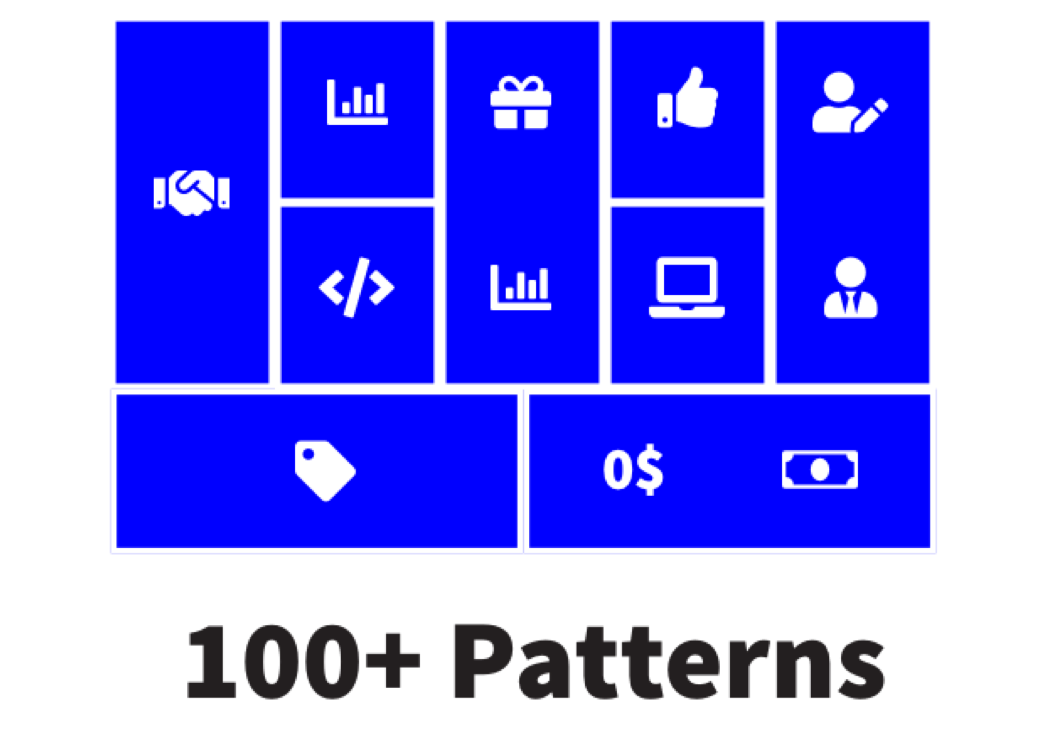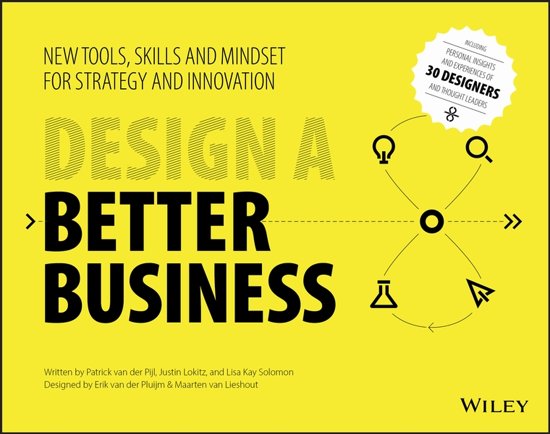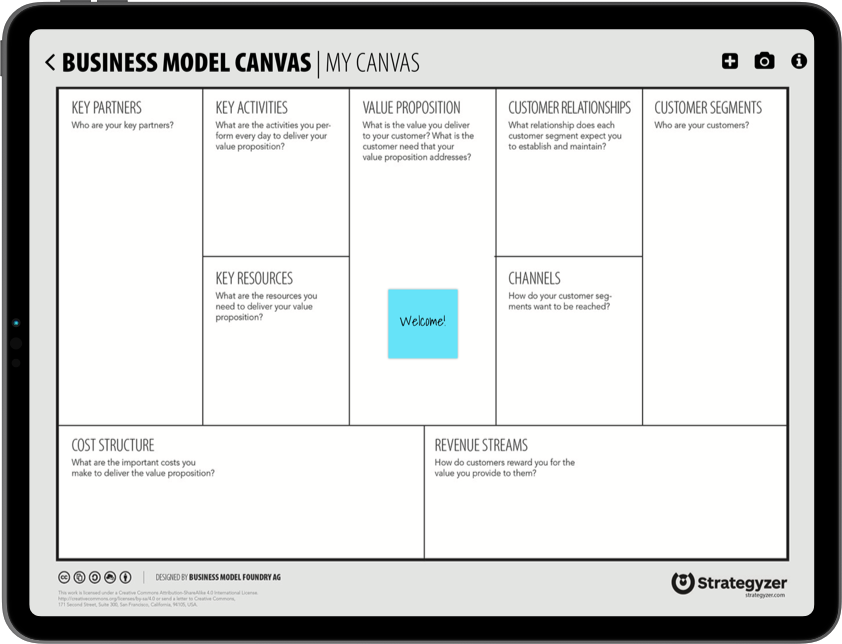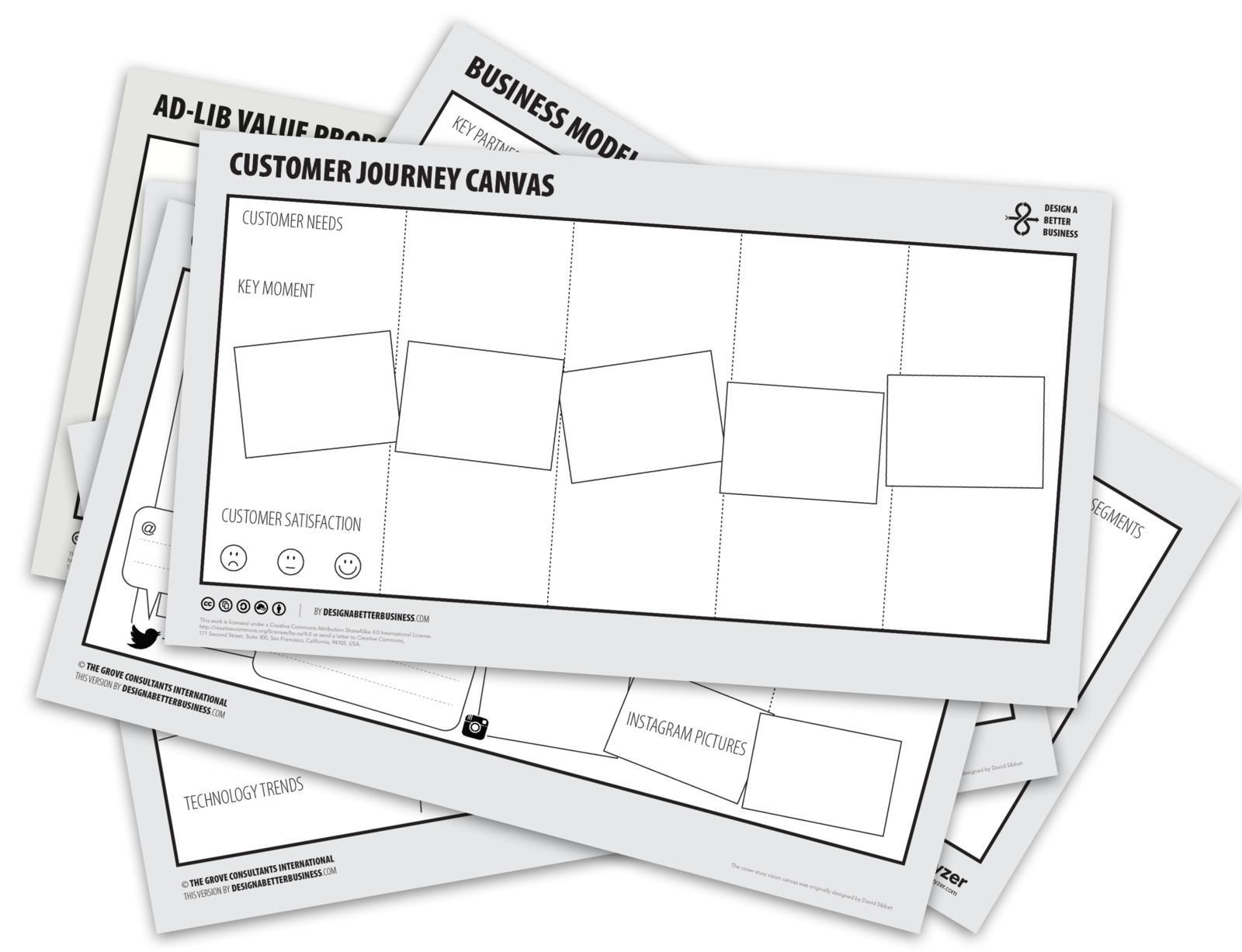Download this free list of 100+ Business Model Patterns from WRKSHP.tools.
Business Model Canvas
Introduction
The business model canvas is a great tool to help you understand a business model in a straightforward, structured way. Using this canvas will lead to insights about the customers you serve, what value propositions are offered through what channels, and how your company makes money. You can use the business model canvas to understand your own business model or that of a competitor! The Business Model Canvas was created by Alexander Osterwalder, of Strategyzer.
Overview
| Time | ± 45 minutes |
| Difficulty | 3 / 5 |
| People | 3 - 5 |
| Author | Strategyzer AG |
| Copyright |
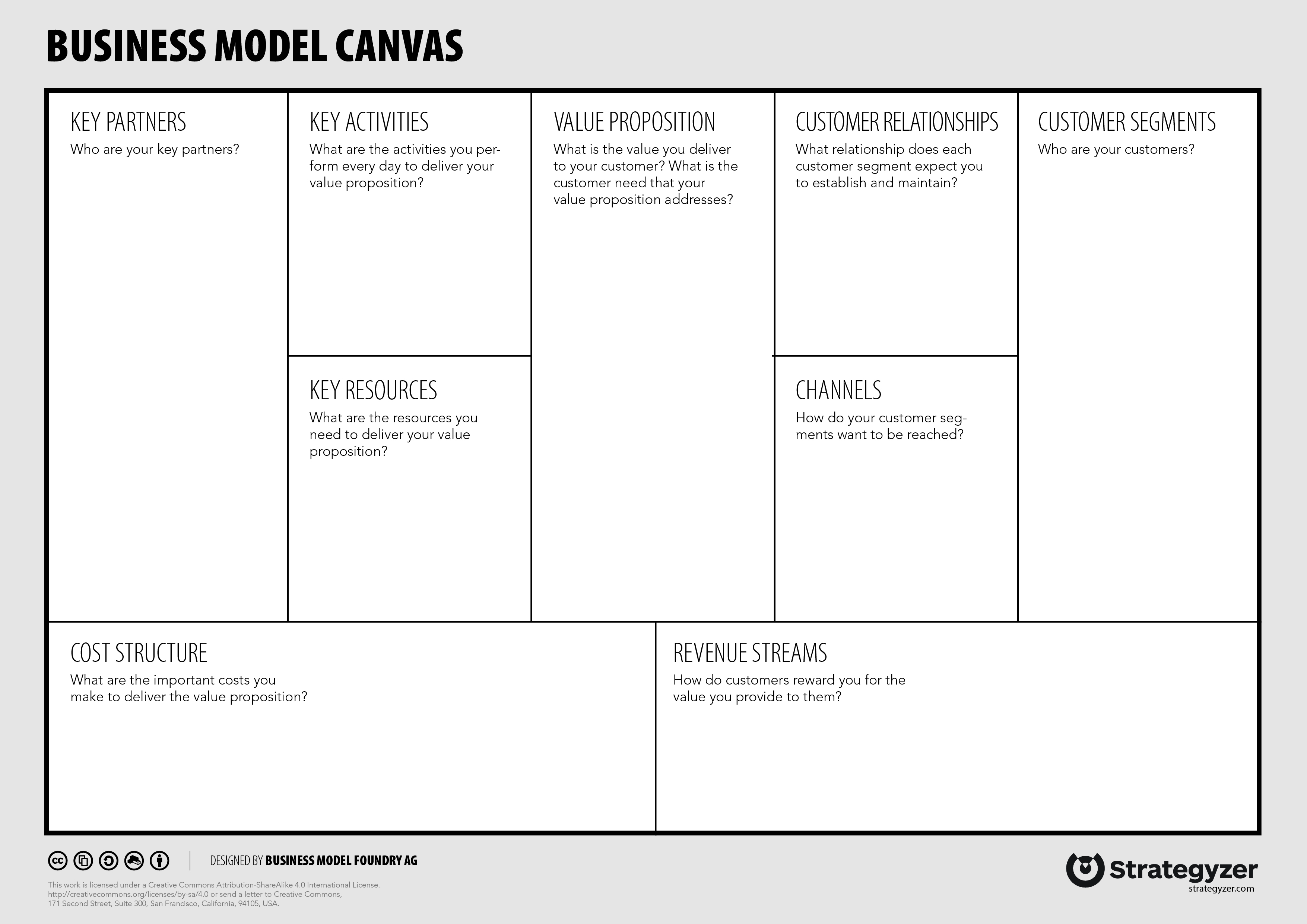
How To Use the Business Model Canvas
The business model canvas is a shared language for describing, visualizing, assessing and changing business models. It describes the rationale of how an organization creates, delivers and captures value.
Tool Overview

Customer Segments List the top three segments. Look for the segments that provide the most revenue.
Value Proposition What are your products and services? What is the job you get done for your customer?
Revenue Streams List your top three revenue streams. If you do things for free, add them here too.
Channels How do you communicate with your customer? How do you deliver the value proposition?
Customer Relationships How does this show up and how do you maintain the relationship?
Key Activities What do you do every day to run your business model?
Key Resources The people, knowledge, means, and money you need to run your business.
Key Partners List the partners that you can’t do business without (not suppliers).
Cost Structure List your top costs by looking at activities and resources.
Step-by-step guide
1 Before you start
You can learn a lot from your competition. Choose some competitors and map their business models. Armed with this information you’ll have deep insight into what customers want and what they are willing to pay for. You’ll have a clearer picture of just how customers’ needs are met across the entire industry, not just in your company. And, you’ll uncover vital information about how other businesses, maybe even very successful businesses, have created their own spaces in the market.
Checklist
- Get the right team of 3-5 people together
- Grab a large chunk of wall space or a war room
- Print or draw the canvas on a big sheet of paper
- Have plenty of sticky notes and markers ready
- Allow yourself 45-60 minutes of undisturbed time
2 High Level
Start by mapping out the business on a high level: only the most important, vital aspects of the business model.
3 Connect the Building Blocks
Link up the building blocks: every value proposition needs a customer segment and a revenue stream!When everything is on the board, take a step back. Have a short break. Did you miss anything? Forget something?
Tip! If you have multiple customer segments it is best to pick a color for each segment. That way you easily see if for each segment there is a value proposition and a revenue stream.
Example Checkout the business models of BMW versus Tesla
4 Current State
Don’t mix ideas for a future state with what is going on right now, and don’t mix different departments!
Tip! If you work for a large organization you might find varying value propositions and business models. In that case, ask the different departments map out their own business model. Compare them afterwards.
5 Review
Take a step back check if every customer segment is linked to a value proposition and a revenue stream. Make sure everything on the left side of the canvas is needed to support the right side of the canvas. Everything else can go.
Rank your business model's performance (0:bad, 10:excellent) for each of the following questions:
Checklist
- How much does switching costs prevent your customers from churning?
- How scalable is your business model?
- Does your business model produce recurring revenues?
- Do you earn before you spend?
- How much of the work can be done by others?
- Does your business model provide built-in protection from competition?
- Is your business model based on a game-changing cost structure?
6 Next Steps
Tip! Have an artist visualize your business model. It helps creating impact when sharing the model and it makes it easier for others to become connected.
Checklist
- Take a snapshot picture of your business model canvas for easy to share future reference
- Ask team-members discuss the business model with others
- Trigger team-members to actively look for 1-2 blind spots
- Filter out the design criteria
- Test your assumptions
Design A Better Business Newsletter
Sign up for the Design A Better Business Newsletter and keep up to date with events and news!
